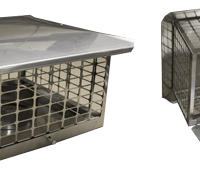Author: Terry Edwards
If you live in the northern half of the U.S., it goes without saying that home heaters are a must. With cold days of winter on the way, it helps to know what type of home heater is right for you. Here’s a quick rundown on the various heating systems and how they can help keep you and your warm when it’s below zero outside.
Furnace
A home furnace is the most common home heater around. It takes air from inside your home and heats it up through a heat exchanger. The blower then blows out the heated air through your ductwork. An air filter helps to keep out dust, mold spores and pollen. Furnaces are generally run on natural gas or electricity, with some powered by heating oil, coal and even wood. The key in lowering home heating costs is to have the most energy efficient heater you can afford.
Heat Pump
If you want to save 25% or more on home heating costs, then a heat pump may be for you. Heat pumps take heat from the outside air and disburse it on the inside. They are amazingly energy efficient and well worth having.
Baseboard Heater
Many homes are heated from the use of a radiant baseboard heater, while others are using them as an additional heating source. While baseboard heaters can be somewhat pricey, they work great in a room that is tough to put in any kind of ductwork system.
Ceiling Or Floor Heaters
These types of home heaters are not as common, but can work quite well. A ceiling or floor heater doesn’t use a blower or ductwork, but rather, heats the inside of a room like the sun would. A hydronic heater would be a good example of radiant floor heating.
Outdoor Patio Heaters
These types of heaters are ideal for using outside your home on a patio or porch area. the patio heater warms up the air around you, allowing you to enjoy some time outside in the sun.
With such a wide variety of heaters available, finding the one that fits your needs shouldn’t be a problem.
Terry Edwards is the owner of All About Heaters, a site providing great information on heaters. You can learn more about Home Heaters as well as much more information on all types of heaters at http://www.Heaters.InfoFromA-z.com





